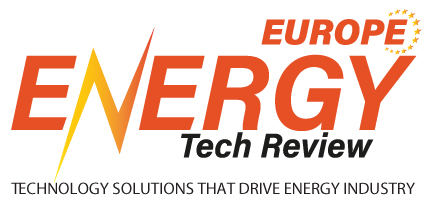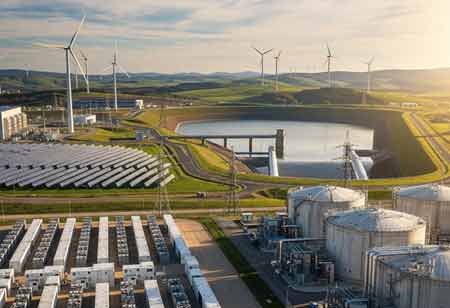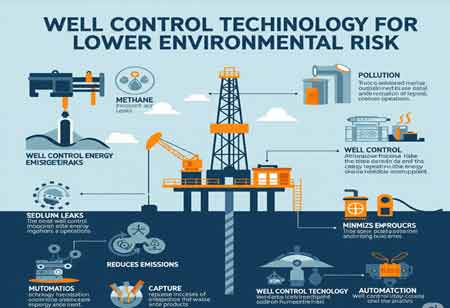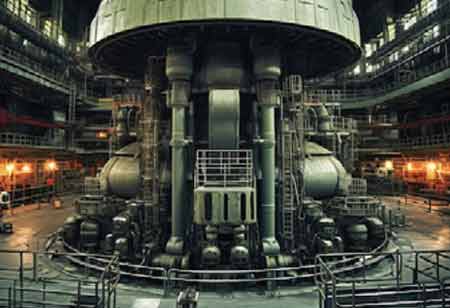CLOSE
Specials
I agree We use cookies on this website to enhance your user experience. By clicking any link on this page you are giving your consent for us to set cookies. More info
Be first to read the latest tech news, Industry Leader's Insights, and CIO interviews of medium and large enterprises exclusively from Energy Tech Review
Thank you for Subscribing
Achieving Efficiency: Thermal and Emissions Control Insights
Thermal management and emissions control are crucial for mixed-fuel combustion systems, as they optimize performance and reduce pollutants through the use of advanced techniques and integrated systems.
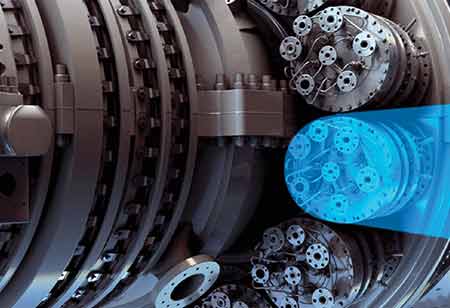
By
Energy Tech Review | Wednesday, October 29, 2025
Stay ahead of the industry with exclusive feature stories on the top companies, expert insights and the latest news delivered straight to your inbox. Subscribe today.
Two essential and interconnected components in the development of mixed-fuel combustion systems are thermal management and emissions control. The widespread use of dual-fuel and multi-fuel engines—which combine conventional fuels with substitutes like natural gas, hydrogen, or biofuels—requires a thorough approach to controlling temperature and emissions of pollutants. These fuel mixtures' unique combustion properties pose a problem and have spurred advancements in exhaust aftertreatment and in-cylinder methods.
The New Paradigm of In-Cylinder Thermal Management
The principal objective of thermal management in mixed-fuel systems is to uphold optimal operating temperatures for all engine components and the exhaust aftertreatment system. This presents a particular complexity, as disparate fuels exhibit distinct ignition points, flame speeds, and heat release characteristics. For example, the precise control required to achieve stable combustion when blending a fuel with a high autoignition temperature, such as natural gas, with a pilot injection of a more reactive fuel, like diesel, is critical. The timing and quantity of each fuel injection are meticulously managed to regulate the peak cylinder temperature, which directly influences engine efficiency and the formation of nitrogen oxides (NOx).
Modern thermal management systems are remarkably sophisticated, relying on an intricate network of sensors and electronic control units to execute real-time adjustments. Variable valve actuation stands as a pivotal technology that enables precise control of the combustion cycle. By altering the opening and closing of intake and exhaust valves, engineers can manipulate the in-cylinder temperature and pressure, which in turn influences the combustion process and contributes to the reduction of pollutant formation. For instance, a late intake valve closing can increase the effective compression ratio, resulting in higher in-cylinder temperatures and more complete combustion. In contrast, early valve opening can aid in reducing temperature and controlling NOx emissions.
Another crucial aspect is the management of the coolant system. Advanced systems utilize electric coolant pumps and switch valves to direct coolant flow to specific engine components on demand. This facilitates rapid engine warm-up, which is vital for the efficient operation of aftertreatment systems. During a cold start, the engine's exhaust gas is too cold for catalysts to function effectively, resulting in a surge of harmful emissions. By swiftly elevating the temperature of the exhaust manifold and the aftertreatment system, the "light-off" time—the period required for the catalyst to become active—is significantly curtailed.
Emissions Control: A Multifaceted Approach
The intricate nature of mixed-fuel combustion necessitates emission control systems that can address a broader spectrum of pollutants. The combustion of both fossil and alternative fuels generates a complex mixture of regulated emissions, encompassing nitrogen oxides (NOx), carbon monoxide (CO), unburned hydrocarbons (HCs), and particulate matter (PM). A significant challenge lies in the fact that optimal conditions for reducing one emission type may concurrently exacerbate another. For instance, elevated combustion temperatures, while potentially decreasing PM, may simultaneously increase NOx, and vice versa.
To mitigate this issue, the industry is progressively adopting highly integrated and intelligent aftertreatment systems. These systems are not standalone components but rather a series of interconnected devices designed to function in concert. A typical configuration may comprise a Diesel Oxidation Catalyst (DOC), a Diesel Particulate Filter (DPF), and a Selective Catalytic Reduction (SCR) system.
The DOC operates by oxidizing CO and HCs into less detrimental carbon dioxide and water vapor. Subsequently, the DPF captures PM, or soot, from the exhaust stream. To prevent filter occlusion, a periodic regeneration process is essential, which involves increasing the exhaust gas temperature to incinerate the accumulated soot. The SCR system serves as the ultimate safeguard against NOx. It functions by injecting a liquid reductant, commonly a urea solution, into the exhaust stream. This solution subsequently decomposes into ammonia, which then reacts with NOx over a catalyst, yielding harmless nitrogen and water.
Advancements in catalyst technology are also exerting a substantial influence. Novel catalyst formulations are under development that exhibit greater efficiency at lower temperatures, thereby enabling aftertreatment systems to activate more rapidly and operate effectively across a broader range of engine loads. Furthermore, the strategic placement of these components and the utilization of thermal insulation are being optimized to minimize heat loss and sustain the elevated temperatures requisite for efficient catalytic reactions.
The Synergy of Systems
The electronic control unit functions as the central processing unit, dynamically adjusting engine parameters and aftertreatment system operations to attain the optimal balance of performance, efficiency, and minimal emissions.
A prime illustration of this fusion is the implementation of electrically heated catalysts. These systems mitigate the reliance on exhaust gas temperature by directly heating the catalyst substrate during a cold start. This significantly diminishes the duration of elevated emissions, thereby ensuring the full functionality of the aftertreatment system from the engine's initiation. Concurrently, the judicious application of exhaust gas recirculation (EGR), which involves cooling and returning a portion of the exhaust gas to the engine, can reduce peak combustion temperatures and directly curtail NOx formation at its origin.
The impetus for enhanced fuel flexibility in combustion systems has expedited the necessity for these advanced control methodologies. As fuels with disparate properties proliferate, the capacity of a system to intelligently calibrate its thermal and emissions control protocols in real-time is imperative. The forthcoming generation of mixed-fuel combustion systems will continue to conflate in-cylinder and aftertreatment strategies, with a singular emphasis on optimizing energy efficiency while ameliorating environmental detriment. The continuous progression of these technologies underscores a commitment to a future where diverse energy sources can be utilized judiciously and effectively.

Copyright © 2025 Energy Tech Review. All rights reserved
